English
Shelling
February 27
Since January, many friends have asked me if there would be a war in Ukraine. I told them that I am not a political scientist or a military expert, nor do I sit in Vladimir Putin’s head, but it seemed to me that there would be “only” an escalation in the Donbass. I could not believe that in the 21st century you could simply, on a whim, invade a neighbouring country. I still can not believe what I am seeing.
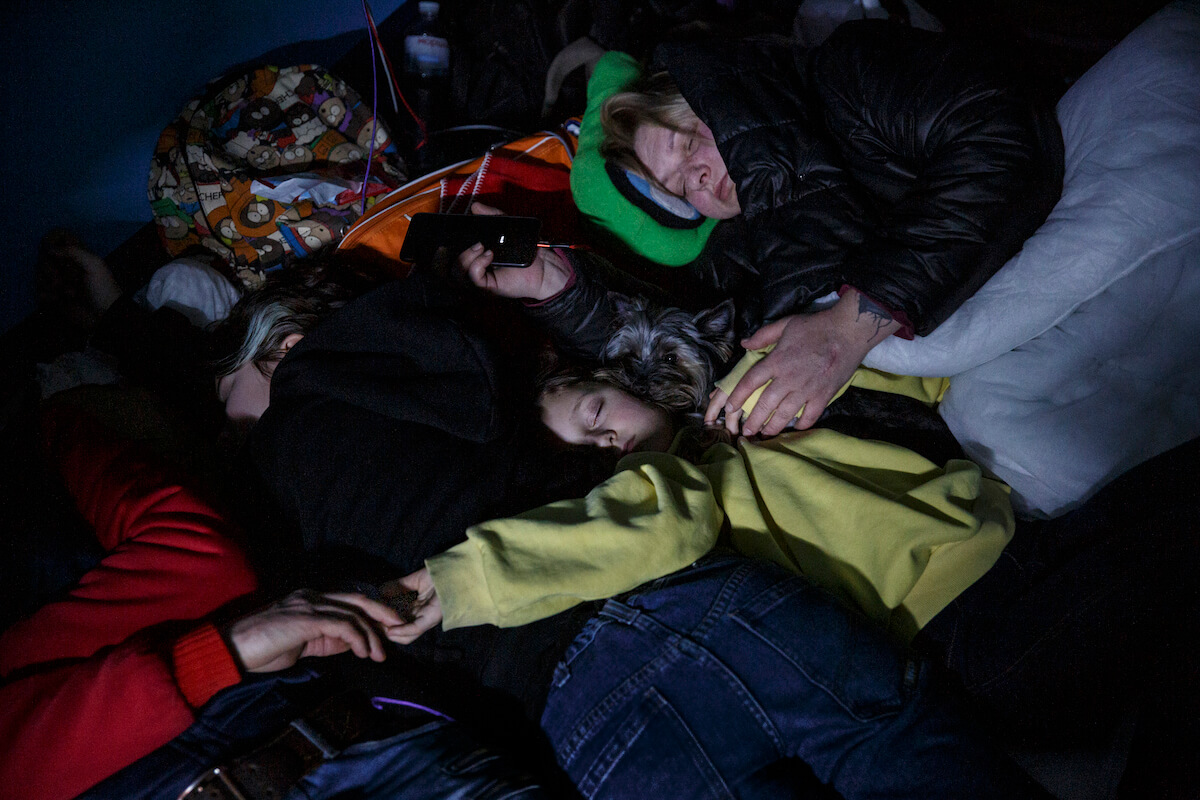
Kyiv, Ukraine.
In the city, alarm sirens again and again blare the shelling warnings.
Many of the inhabitants spend their nights in basements or shelters.

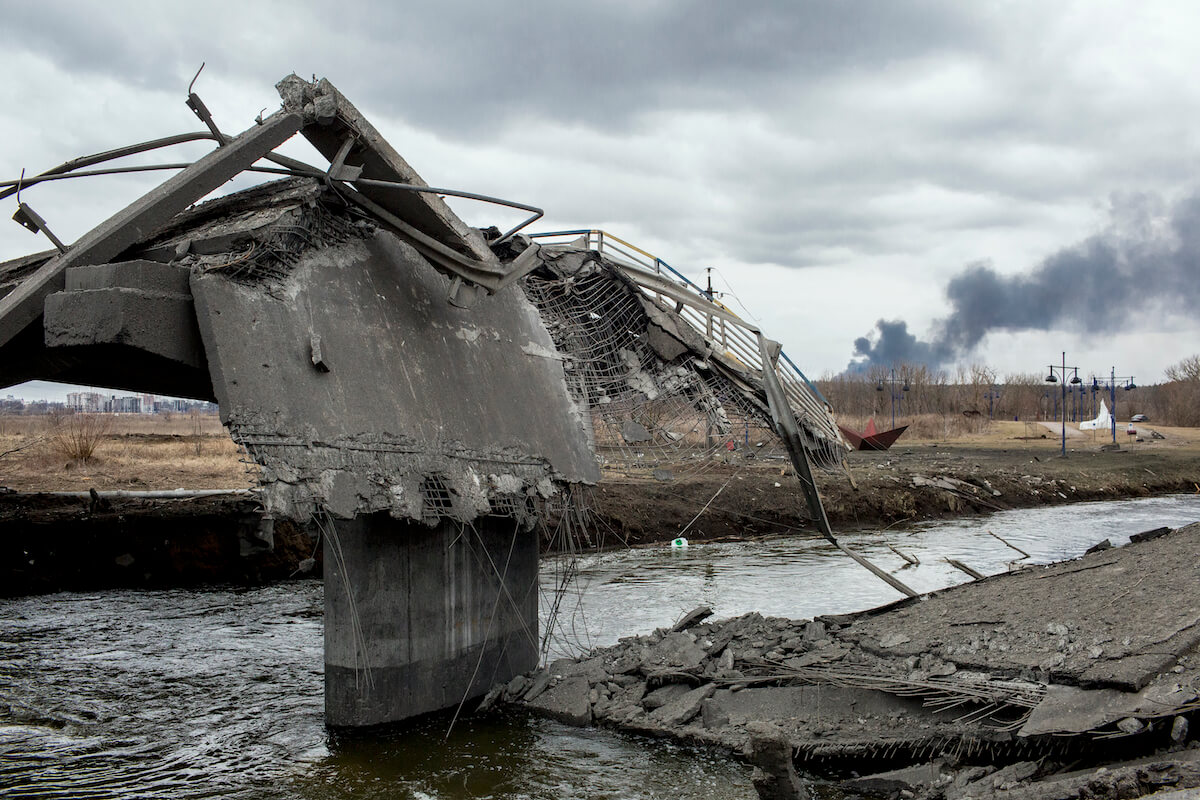
Irpin, a town near Kyiv.
Evacuation. Because the bridge connecting the city with the capital has been blown up,
most inhabitants travelled the road on foot.
February 28
After the curfew, I am finally back at work. Downtown Kyiv appears quiet and calm. Familiar places, normally teeming with people, are now empty.
March 1
In the city, things are ok. There are blokposti [checkpoints] and barricades on the streets, but shops are open for business. Although some types of goods are unavailable, we have enough food, I even managed to get a full tank of gas. Shelling alarms sound several times during the day. Residential homes are being hit by artillery. When the war broke out, the people of Kyiv could not believe what was happening. For those who stayed in the city, the initial shock is slowly giving way to habit and a new war routine. Queueing to the stores, sheltering for the night, frequent document checks all prolong the denial. But it can only last for so long. When rockets fall on neighbours’ homes, when friends are killed by artillery fire, more residents decide to leave.
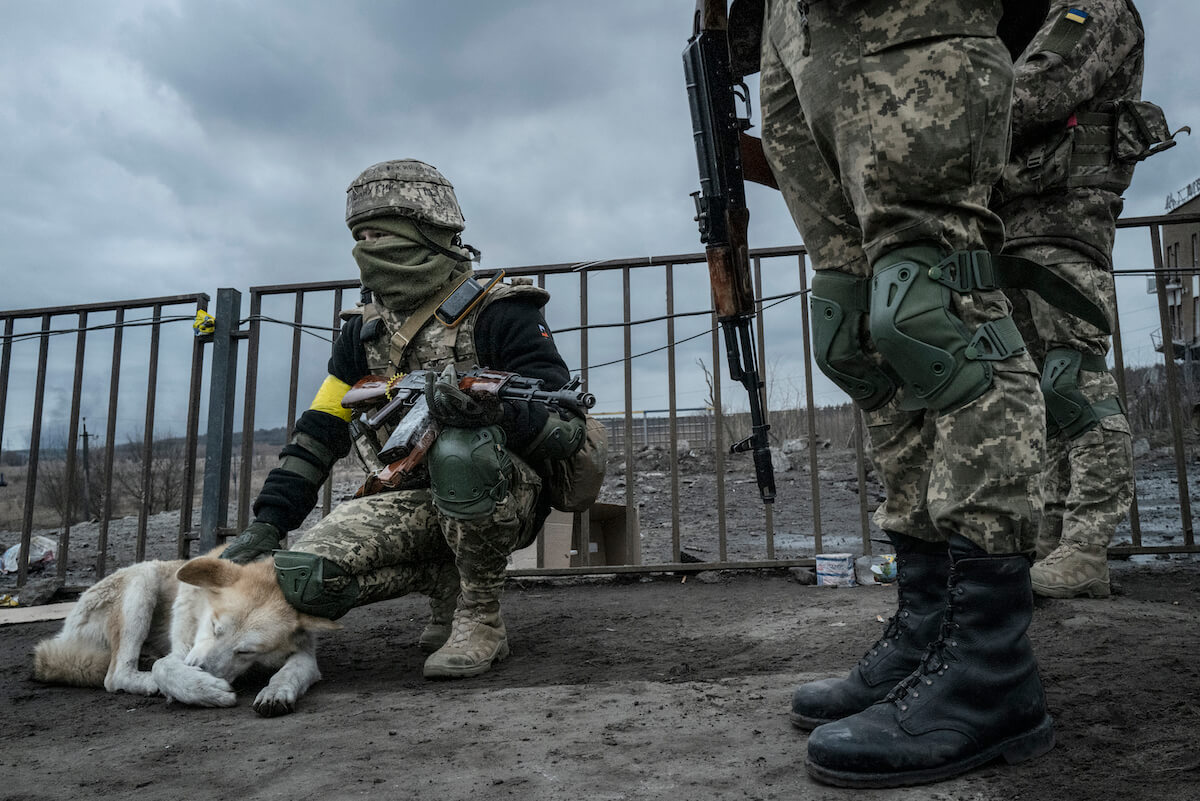
Irpin.
Fleeing the war, Ukrainians take their pets with them.
Despite this, many animals were abandoned throughout the country.
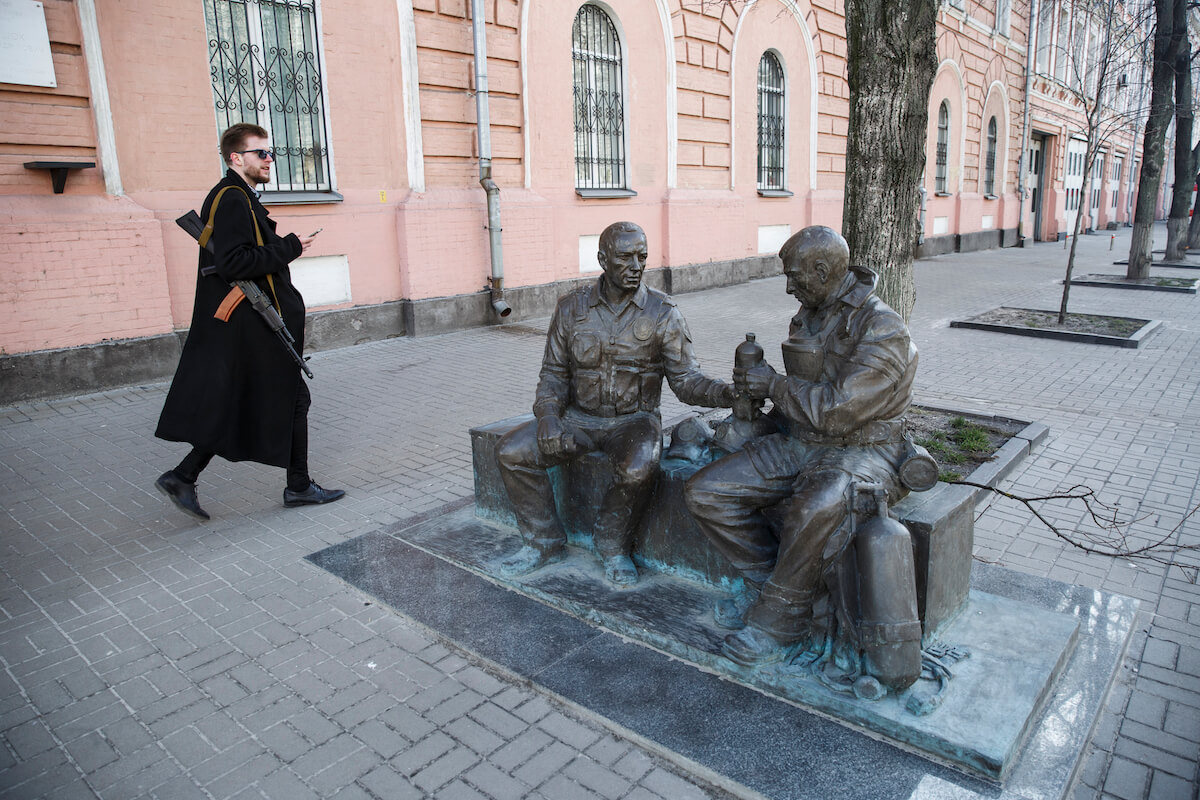
Kyiv.
Throughout the country, territorial defence units are being formed, consisting of volunteers,
who are given weapons. Students are among them.
March 6
Situation in Kyiv is stable. But I may have just lost my car. Yesterday, we went to Irpin with an evacuation convoy. As people were boarding the bus, shelling started. We evacuated on foot over a blasted bridge. But the car stayed there, and the Russians advanced even closer yesterday. We will see, maybe there will be a counteroffensive.
March 7
Before the war, Irpin was a quiet town, a residential suburb for the capital’s commuters. Now the Russians control the road to Kyiv along with the blokpost. That was the only available escape route.

Kyiv.
One of the first residential buildings to be hit. Many apartments were completely obliterated,
the rocket ripped a multi-storey hole in the building.

Kyiv.
On February 24, President Volodymyr Zelensky signed a decree on universal mobilization. Men aged 18-60 are now barred from leaving Ukraine. This is why women, children, and the elderly make up most of the refugees.
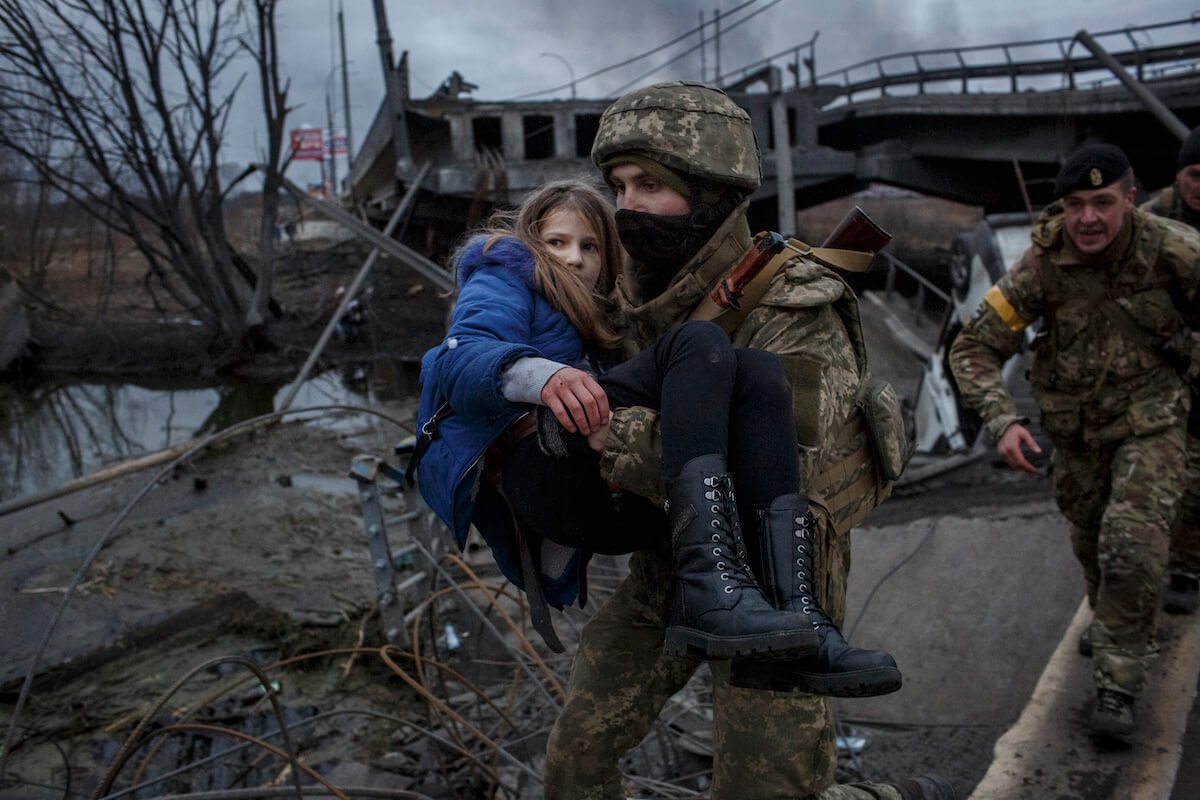
Irpin.
The evacuation took place as combat raged on. Russian artillery also targeted the immediate vicinity of the destroyed bridge. One such shelling killed a number of civilians.
March 9
Most of the residents fled Irpin on foot, crossing a makeshift footbridge in place of the destroyed bridge. To this day, bodies of people shot by the Russians lie along the road to Kyiv. They are being collected off the streets and sidewalks by volunteers who, risking their lives, had helped with the evacuation. Wrecked cars still litter the side of the road. The Ukrainian side did not fire back.
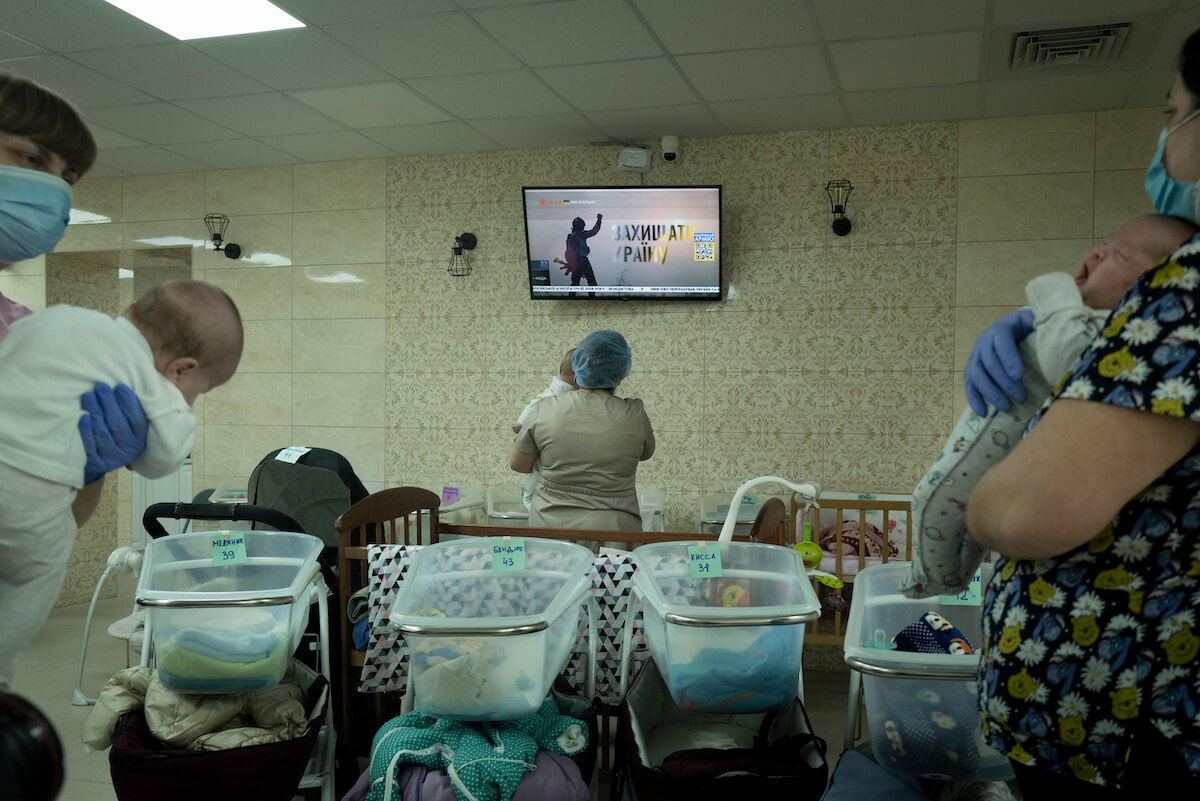
Kyiv.
Family Medicine Clinic specializing in surrogacy (this method of foster parenting
is completely legal in Ukraine). The staff, patients, and children have been moved to the basement.
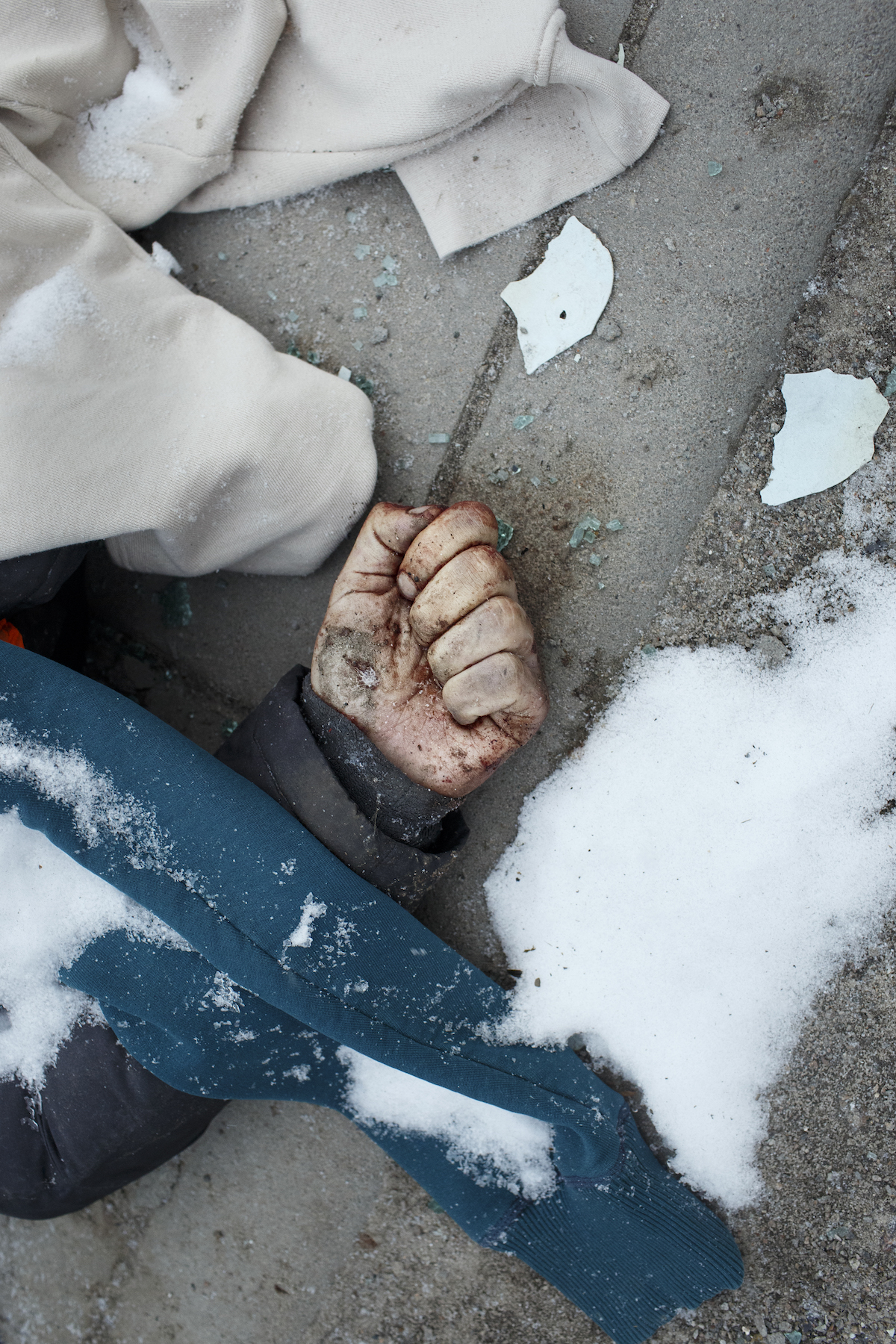
Irpin–Stoyanka road, March 6.
Civilians leaving Irpin had to go the long way round. The Russians fired on those evacuating in cars.
Several people were killed. Sasha among them.
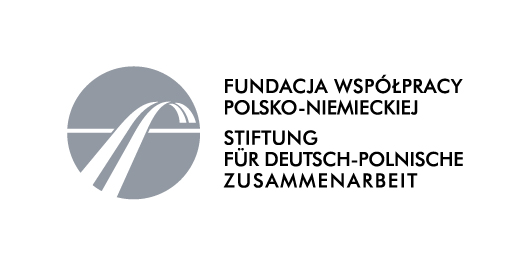
This report was created as part of a special edition of the Journalist Fellowship Program of the Foundation for German-Polish Cooperation for journalists and war correspondents from Ukraine, Poland, and Germany.

Photography in Pismo receives the patronage of Puro Hotels, contributing to cultural life
and educational programmes for the popularization of the visual arts.
